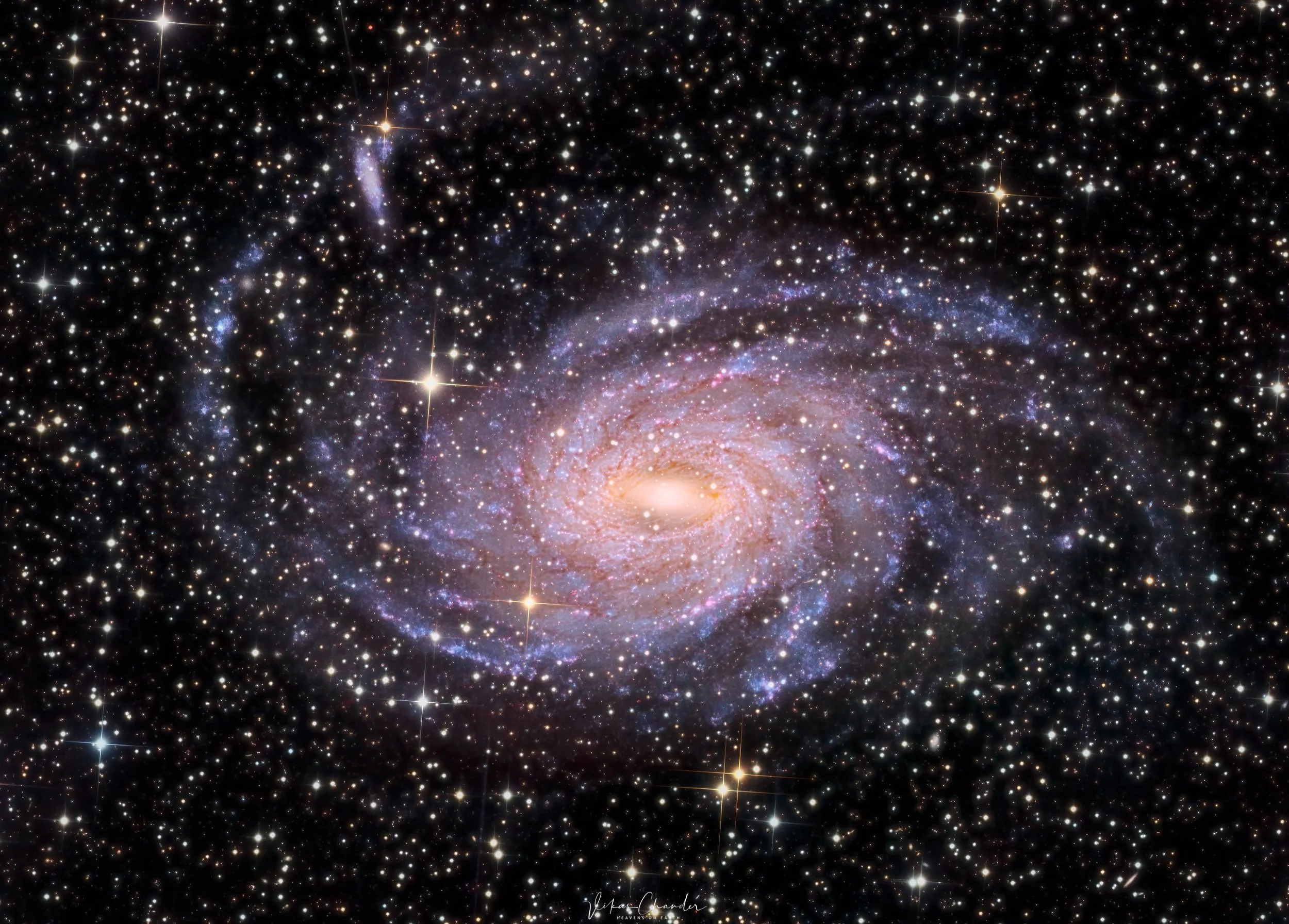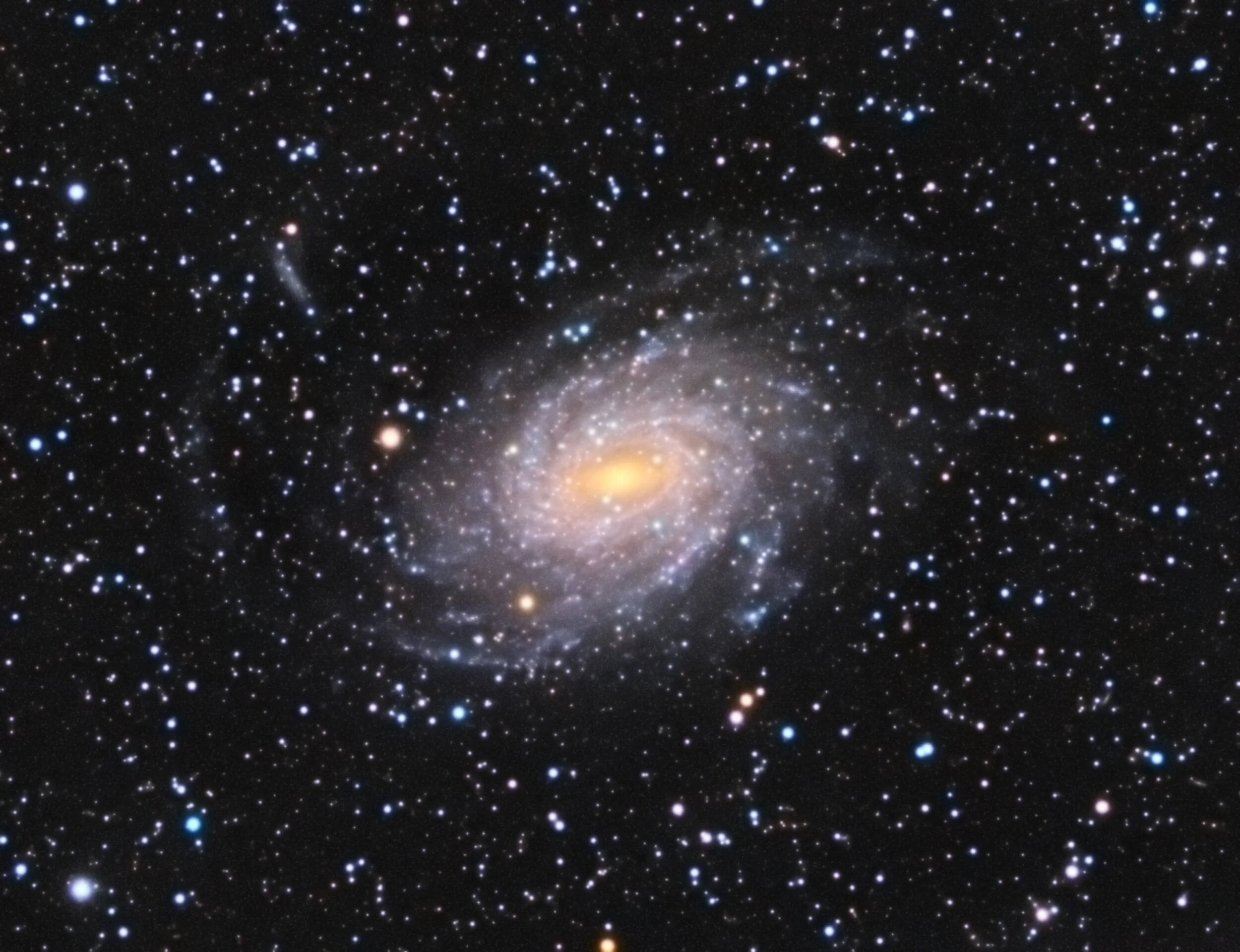
AAPOD2 Image Archives
NGC 6744
Image Description and Details : NGC 6744 is the big brother and similar to our own Milky Way, with a disk stretching 175,000 light-years across. A small, distorted companion galaxy is located nearby, which is similar to our galaxy's Large Magellanic Cloud. This companion, called NGC 6744A, can be seen as a blob in the main galaxy's outer arm, at upper left. The galaxy is situated in the constellation of Pavo at a distance of about 30 million light-years. It is one of 50 galaxies observed as part of the Hubble Space Telescope’s Legacy ExtraGalactic UV Survey (LEGUS), the sharpest, most comprehensive ultraviolet-light survey of star-forming galaxies in the nearby Universe, offering an extensive resource for understanding the complexities of star formation and galaxy evolution.
Telescope : Planewave CDK17 f6.8
Camera : SBIG STXL 11002
Mount : Software Bisque Paramount ME
Focal length : 2939mm
Fov : 42 x 29 arcmins
Image Scale : 0.63 arcsec/pixel
Observatory : El Sauce Chile
Filters: HaLRGB
L 22x20m R 15x20m G 15x20m B 16x20m
H 15x30m
Integration: 30h10m
RA: 19h 09m 38s
Dec : -63° 51′ 03″
Copyright: vikas chander
NGC 6744
Image Description and Details : NGC 6744 - I started this project at the end of May, capturing data over a total of 10 nights. This intermediate spiral galaxy is bigger than the Milky Way, with a disk stretching 175,000 light-years across. A small, distorted companion galaxy is located nearby, which is similar to our galaxy's Large Magellanic Cloud. This companion, called NGC 6744A can be seen in the main galaxy's outer arm in the upper left of this image.
Lights -
Lum: 529 X 60 sec
Red: 200 X 60 sec
Green: 200 X 60 sec
Blue: 200 X 60 sec
Darks - 50
Flats - 50 per filter
Flat darks - 50 per filter
Total integration time - 18.82 hours
Equipment
Telescope - @celestronuniverse Edge HD 800
Camera - @zwoasi ASI294MM Pro
Filters - Optalong L-Pro & Baader RGB filters
Mount - SW EQ6-R Pro
Focuser - @primalucelab ESATTO 2”
Guidescope - Astromania 70mm guidescope
Guide camera - @zwoasi 120mm
Controller - Pegasus Astro Pocket Powerbox
Main processing steps in Pixinsight
For Luminance data
1. Calibration, registration, normalisation & stacking
2. Dynamic background extraction
3. Deconvolution
4. MultiscaleLinearTransform
5. Histogram stretch
6. Curves
For the Colour data
1. Calibration, registration, normalisation & stacking
2. Dynamic background extraction
3. MultiscaleLinearTransform
4. Histogram stretch
5. Curves
For the RGB image
1. ChannelCombination
2. Dynamic background extraction
3. PhotometricColorCalibration
4. SCNR
5. Histogram stretch
6. Extract Luminance from RGB image
7. Apply LRGBCombination (L only) on RGB image repeatedly until colours are saturated
8. Convolution
For LRGB image
1. Apply Luminance date using LRGBCombination (L only)
2. Curves
3. MorphologicalTransformation
Copyright:Peter Dunsby




